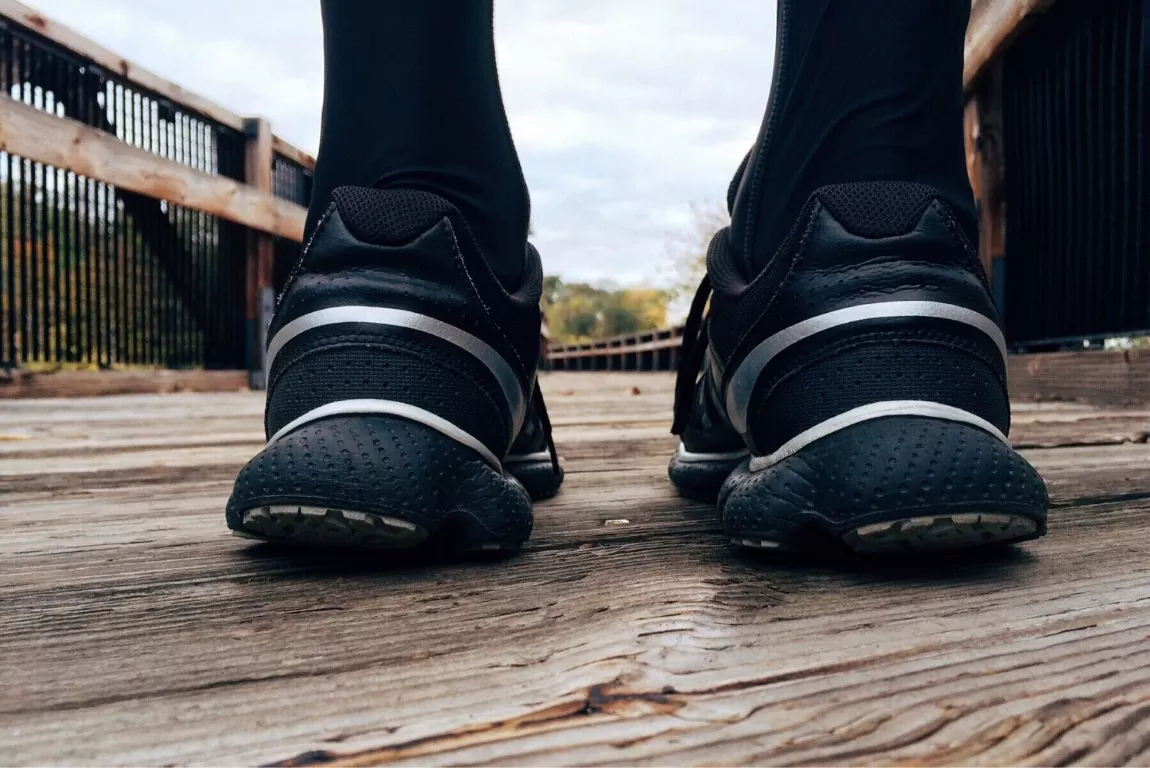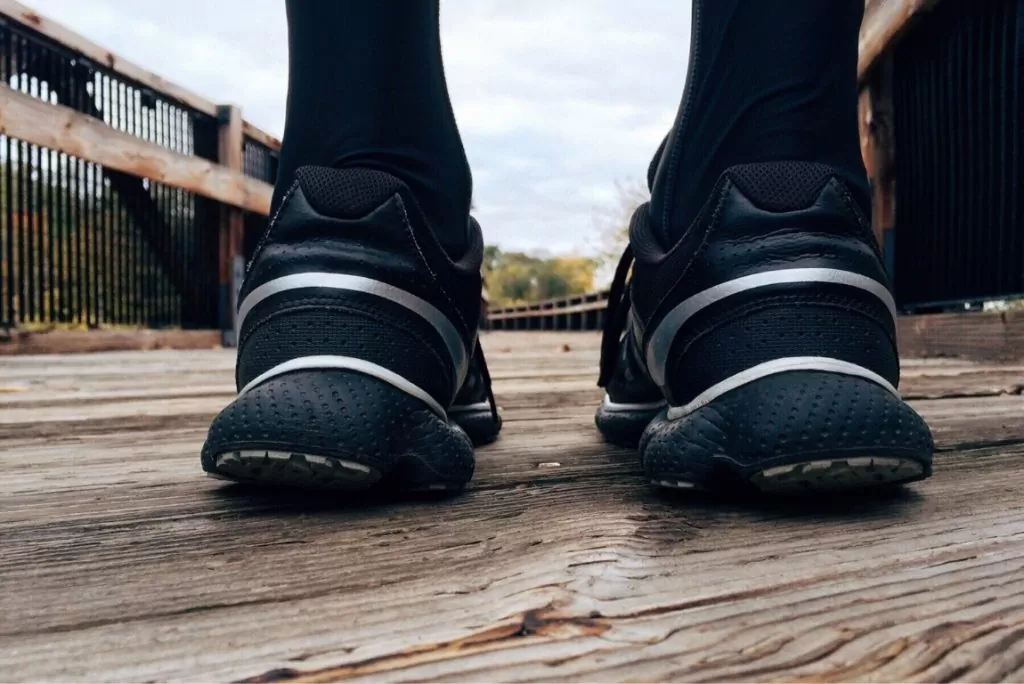For Achilles tendonitis, opt for shoes with proper arch support and cushioning for comfort and stability. Avoid high heels and flat shoes.
Dealing with Achilles tendonitis can be challenging, especially when it comes to finding the right footwear that alleviates pain and provides support. The condition occurs due to inflammation of the Achilles tendon, often resulting in discomfort and reduced mobility. Wearing the wrong shoes can exacerbate the symptoms, making it crucial to choose footwear that offers adequate arch support and cushioning.
By selecting shoes that prioritize comfort and stability, individuals with Achilles tendonitis can effectively manage their condition and continue with their daily activities without added strain on the affected tendon.

Credit: www.clickphysiotherapy.com.au
Best Shoes For Achilles Tendonitis
Finding the best shoes for Achilles tendonitis is essential for pain relief and proper support. Look for shoes with cushioning, arch support, and a heel counter to alleviate symptoms and aid in the healing process. Additionally, choose shoes with a flexible sole to reduce strain on your Achilles tendon.
The right footwear is vital when dealing with Achilles tendonitis to help alleviate pain and promote healing. _Running Shoes_, _Walking Shoes_, and _Cross-training Shoes_ designed specifically for this condition can make a significant difference in comfort and recovery. Here’s a closer look at the best shoes for Achilles Tendonitis. ### Running Shoes Running shoes with proper arch support and cushioning can help reduce strain on the Achilles tendon. Look for _shoes with a well-cushioned heel_ to absorb impact and minimize stress on the tendon. ### Walking Shoes For individuals with Achilles tendonitis, comfortable and supportive walking shoes are essential. _Choose shoes with a low heel_ and ample cushioning to relieve pressure on the Achilles tendon while walking. ### Cross-training Shoes Cross-training shoes offer versatility and support, making them a great option for those with Achilles tendonitis. Look for _shoes with good stability and cushioning_ to protect the tendon during various activities. Selecting the right shoes can greatly impact the management of Achilles tendonitis. _Choosing supportive footwear_ is a key step in minimizing discomfort and promoting recovery.
Credit: www.amazon.com
Features To Look For In Achilles Tendonitis Shoes
Cushioning: Opt for shoes with ample cushioning to reduce impact on the Achilles tendon.
Arch Support: Look for shoes with proper arch support to alleviate strain on the tendon.
Heel Counter: Choose shoes with a sturdy heel counter for stability and support.
Footwear Mistakes To Avoid With Achilles Tendonitis
Choosing the right footwear is crucial when dealing with Achilles Tendonitis. Opt for shoes with proper arch support and cushioning to alleviate pressure on the Achilles tendon. Look for flexible, low-drop shoes with a heel counter to provide stability and reduce strain on the tendon.
High Heels
Avoid high heels as they can increase pressure on Achilles tendon.
Ill-fitting Shoes
Steer clear of ill-fitting shoes that can aggravate Achilles tendonitis.
Minimalist Footwear
Minimalist footwear may lack cushioning, impacting Achilles health.
Stretching And Strengthening Exercises For Achilles Tendonitis
Stretching and strengthening exercises are vital for managing Achilles tendonitis. These exercises can help alleviate pain, improve flexibility, and strengthen the affected tendon, contributing to a speedier recovery. Incorporating these exercises into your daily routine can play a crucial role in maintaining the health of your Achilles tendon. Here are some effective stretching and strengthening exercises to alleviate Achilles tendonitis:
Eccentric Calf Raises
Eccentric calf raises are an effective exercise for rehabilitating Achilles tendonitis. To perform this exercise, stand on a step or raised platform with your heels hanging off the edge. Slowly raise both heels up, then lower one heel down below the level of the step, using the support of your other foot. This movement should be slow and controlled to maximize the strengthening effect on the Achilles tendon.
Toe Raises
To alleviate Achilles tendonitis, toe raises can be an effective exercise. While seated, place a resistance band around the toes of your affected foot and gently push against the band, flexing your toes upward. This exercise helps strengthen the muscles in the foot and calf, offering support to the Achilles tendon.
Calf Stretches
Calf stretches are crucial for maintaining flexibility and alleviating tightness in the Achilles tendon. Stand facing a wall, placing your hands on the wall for support. Step back with one foot, keeping it straight, and press the heel into the floor. Lean forward to feel a stretch in the calf muscle. Hold the stretch for about 30 seconds and then switch to the other leg.
Other Treatment Options For Achilles Tendonitis
Aside from wearing the right kind of shoes for Achilles tendonitis, there are other treatment options to consider. These options aim to alleviate pain, promote healing, and prevent further damage to the Achilles tendon. Here are some effective treatments:
Physical Therapy
Physical therapy plays a crucial role in the treatment of Achilles tendonitis. It focuses on strengthening the affected area, improving flexibility, and reducing inflammation. A physical therapist will guide you through a tailored exercise program, which may include calf stretches, heel drops, and eccentric exercises. By gradually introducing stress to the tendon, you can stimulate healing and restore its proper function.
Rest And Ice
Rest and ice are simple yet effective ways to manage Achilles tendonitis. Giving your tendon time to heal is essential in the recovery process. Avoid high-impact activities that strain the tendon, and instead, opt for low-impact exercises such as swimming or cycling. Applying ice to the affected area for around 15-20 minutes, several times a day, can help reduce pain, swelling, and inflammation.
Orthotic Inserts
Orthotic inserts are another treatment option to consider for Achilles tendonitis. These inserts provide additional cushioning and support to the foot, helping to alleviate strain on the Achilles tendon. They can be easily inserted into your existing shoes and provide relief by redistributing pressure away from the affected area. Custom orthotic inserts are also available. Consult with a podiatrist or orthopedic specialist to determine the best type of inserts for your specific needs.

Credit: www.clickphysiotherapy.com.au
Frequently Asked Questions On What Kind Of Shoes To Wear With Achilles Tendonitis
What Are The Best Shoes To Wear For Achilles Tendonitis?
Wearing shoes with good arch support, cushioning, and stability can help relieve pain and reduce strain on the Achilles tendon. Look for shoes with a heel drop of 8-12mm, a supportive midsole, and a sturdy heel counter.
Can I Wear Heels If I Have Achilles Tendonitis?
It is not recommended to wear high heels if you have Achilles tendonitis. Heels increase strain on the Achilles tendon and put your foot in an awkward position, which can worsen the condition. Opt for supportive shoes with a low heel or flat shoes instead.
Are Running Shoes Good For Achilles Tendonitis?
Yes, running shoes with proper cushioning and arch support can be helpful for Achilles tendonitis. Look for shoes specifically designed for running and that provide good shock absorption to reduce the impact on the Achilles tendon during activities like running.
Conclusion
Finding the right shoes for Achilles tendonitis is crucial for managing discomfort and promoting healing. With proper support and cushioning, you can alleviate pressure on the tendon. Don’t forget to consult with a healthcare professional before making any footwear changes.
Your comfort and recovery are top priorities. Take care of your feet!



